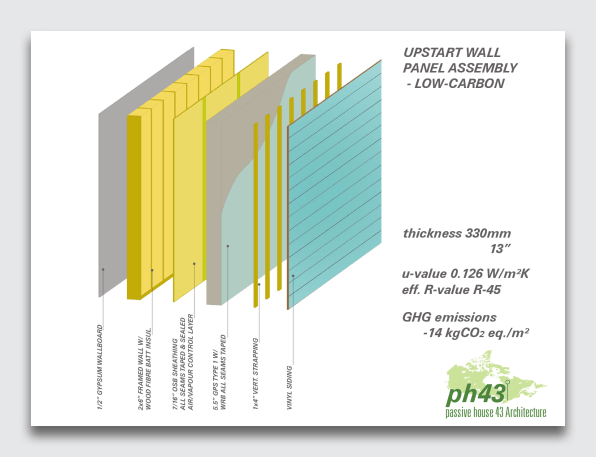On a building web-site in Brantford, a Canadian city southwest of Toronto, a new dwelling will before long be created using an approach that’s a small a lot more like placing jointly IKEA furnishings than common home construction. Intended to Passive Household standards—an ultraefficient method that will save energy—the dwelling is a new experiment for Habitat for Humanity Canada. The corporation relies on volunteer labor, and the new design would make it easier for volunteers to develop. It could also assistance make sustainable-dwelling development more very affordable.
The nonprofit, like other individuals in the homebuilding room, is working with design fees that have sharply risen. The new design grew out of a discussion about fundraising. “They have been relying on standard design approaches to build properties, relatively than optimizing that approach and leveraging the great volunteer workforce that they can provide to initiatives,” states Sumit Ajwani, founder of Makers, a creative consultancy that partnered with the nonprofit on the experiment, named the Upstart Venture. “It was very clear that there was an opportunity to make a more reasonably priced, far better house, that also better makes use of their volunteers.”
As a substitute of framing the house on the building internet site, the Upstart Challenge style and design uses prefab elements that can be constructed inside of during the winter season, when weather puts a halt to development outdoors. When the parts of the household are put together onsite, it calls for fewer specialised labor because elements like walls are by now assembled when they are sent. “You can modularize the elements on their own, so that they come to be actually simple pieces for volunteers to place jointly,” claims Craig England, founder and principal at Passive Dwelling 43, a Toronto-dependent architecture organization that worked on the design. “Instead of overwhelming them with framing a complete dwelling, they’re genuinely just framing a panel.”

“Panelized” walls designed offsite contain the interior wall, a couple of levels of insulation all-around a vapor-regulate layer to keep moist air inside, and the exterior shingles. When they’re trucked to the site, personnel just have to put the walls in position. A passive-home style and design needs that the building envelope—the separation amongst the inside and the outdoors—be airtight to help you save strength, which can be complicated to assemble without having specialized experience. The prefab style and design assists simplify section of the course of action. “It accelerates the website do the job, specifically on the complicated aspect of receiving the making envelope right for something like a large-performance create,” claims England.
The passive-household layout can assistance appreciably decrease strength charges. The new house, which will have a heat pump but not a furnace, is expected to use 76% considerably less electricity for heating. An common dwelling in the place might have an electrical monthly bill of $100 a thirty day period, but the new residence will possible have expenses among $11 and $25 for each month—something that is significantly useful for the very low-earnings family members that qualify to acquire Habitat for Humanity residences.
Other tweaks in the style and design also support make on-web page design less difficult. If ceilings are 9 toes large, for case in point, it involves chopping lumber to make partitions the ideal sizing, “but if you develop every little thing in eight-foot spans, there is no chopping,” states Ajwani. “So out of the blue, it’s way less complicated for someone to assemble, say, a panel, or aspect of a house.” Expert services like electrical power and plumbing are compartmentalized in a single place of the residence, one more easy improve that can help with development.
These variations do not imply that skilled labor is not wanted but that those builders can work a lot more proficiently. That helps reduce charges, while the house’s sustainable-style characteristics simultaneously make it much more costly. The first “prototype” home is between 6% and 10% far more pricey than a common Habitat residence. (Residences in the region presently market for all over $800,000 the nonprofit, which has gained the land as a donation for the venture, together with other assist, is now increasing $500,000 for its bills.)
“As this is our initial endeavor to combine passive-property concepts, there will be learnings from this challenge that we’re hoping to apply to long term jobs, and encourage other individuals,” states Brian Elliot, CEO of Habitat for Humanity Heartland Ontario. The business is planning to also develop multifamily buildings, which can make passive style and design more value-helpful.
The gains of possessing a residence with incredibly very low strength costs make an extra upfront financial investment worthwhile, claims Ajwani, and costs can also come down more than time: “As our new design for leveraging volunteers improves, we’ll see a additional dramatic reduction in all round expenses, and we believe we can a person working day attain a comparable price tag to regular development, but with the additional prolonged-time period rewards of a substantial-performance house.”





More Stories
Narrow House Design Solutions That Work Brilliantly
15 Modern House Design Ideas That Define Luxury
Fridge Water Dispenser Cleaning Made Simple